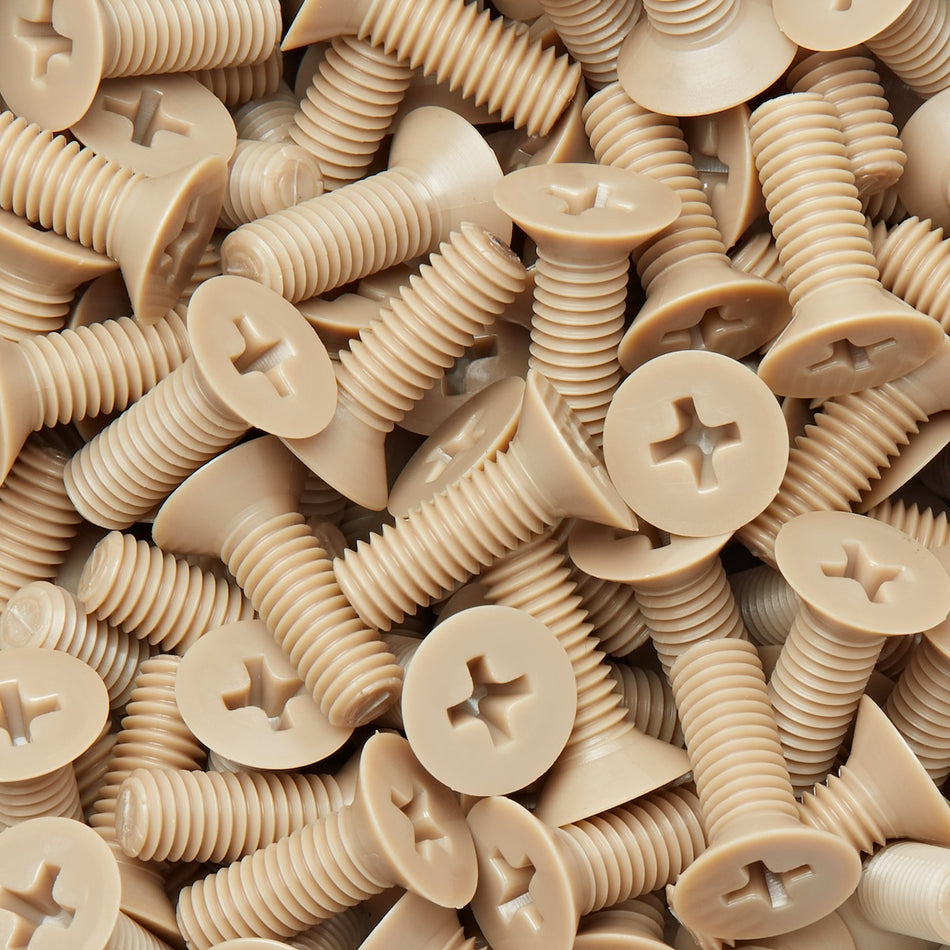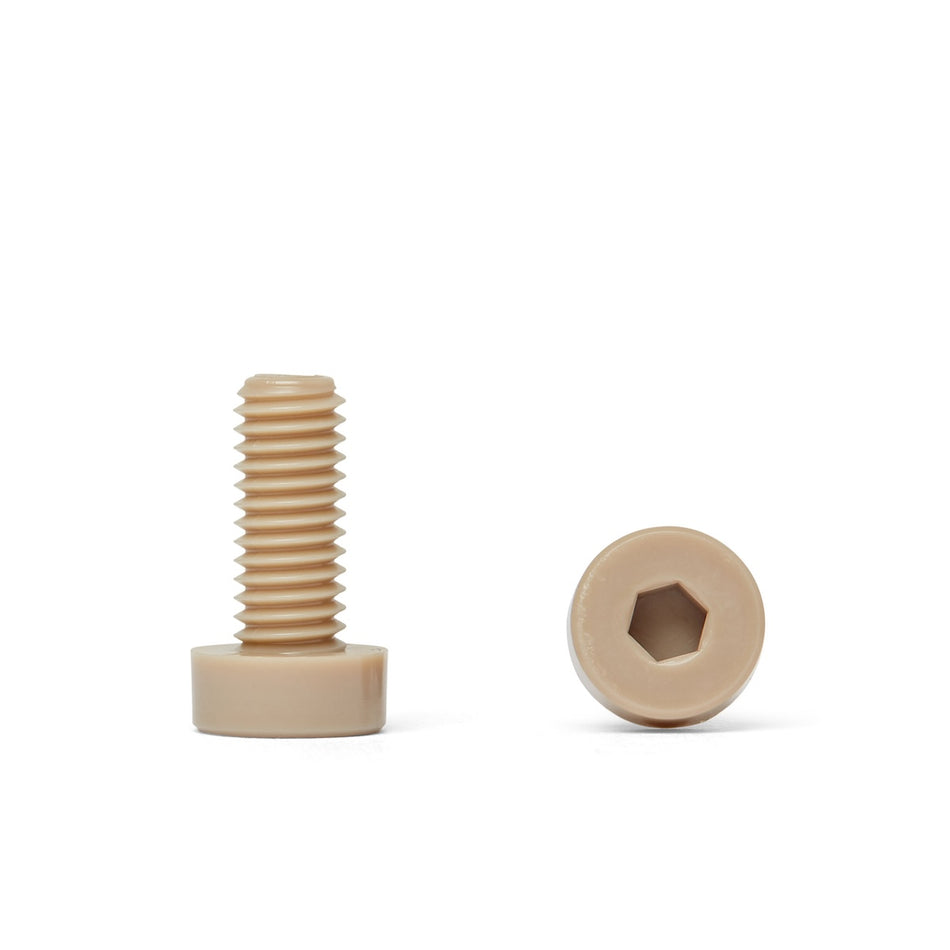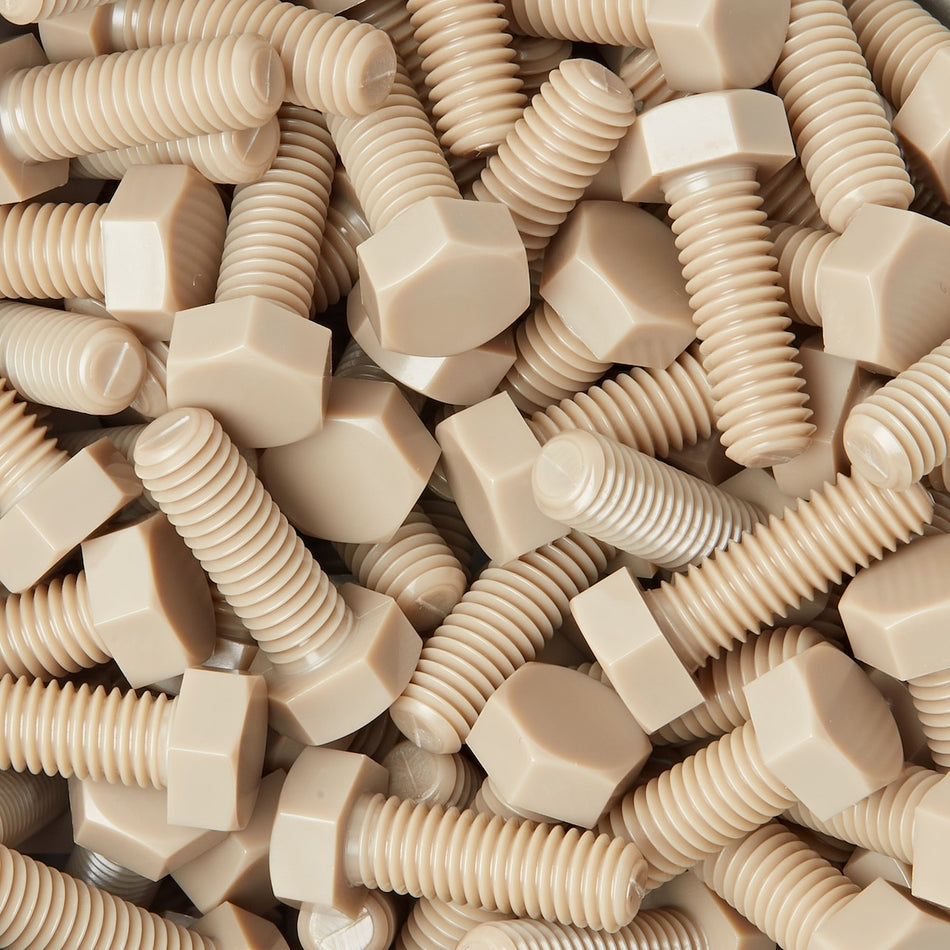132 Products

Remote Imaging Industry's use of Polymer Screws, Nuts, Bolts, and Fasteners
Polymer screws, nuts, bolts, and fasteners are mechanical components made of polymers that are used to hold two or more objects together. These fasteners are often used in remote imaging to secure components in place and ensure that they are properly aligned.
One of the main advantages of using polymer fasteners in remote imaging is their ability to withstand high temperatures. Many polymers have a high melting point, making them suitable for use in environments where temperatures may exceed the melting point of traditional metal fasteners. Additionally, polymer fasteners are resistant to corrosion and do not conduct electricity, making them suitable for use in electrically charged environments.
Polymer fasteners are also lightweight and can be designed to have specific electrical or thermal properties, making them suitable for use in a variety of different applications. They are often used in conjunction with other materials, such as metals, to provide a combination of strength and electrical insulation.
Overall, polymer screws, nuts, bolts, and fasteners are an important part of the remote imaging industry and are used to secure components and ensure that they function properly.
Remote imaging refers to the process of capturing and transmitting images from a remote location. This can be done using a variety of technologies, such as satellite imagery, drones, and remote sensing instruments.
One common use of remote imaging is in the field of remote sensing, which involves the use of sensors and imaging technologies to gather data about the Earth's surface and atmosphere. Remote sensing technologies can be used to monitor and map natural resources, study environmental changes, and assist with disaster response and management.
Remote imaging is also used in a variety of other applications, including in the military, where it is used to gather intelligence and surveillance data, and in the field of medicine, where it is used to remotely diagnose and treat patients.
Overall, remote imaging is a powerful tool that allows people to gather and analyze data and images from a distance, and is used in a variety of different fields and applications.
































